The Bridge at Hoover Dam
On his way to the Mojave Desert, photographer Jamey Stillings stumbled across a rare intersection of awesome innovation and breathtaking scenery—the Hoover Dam.
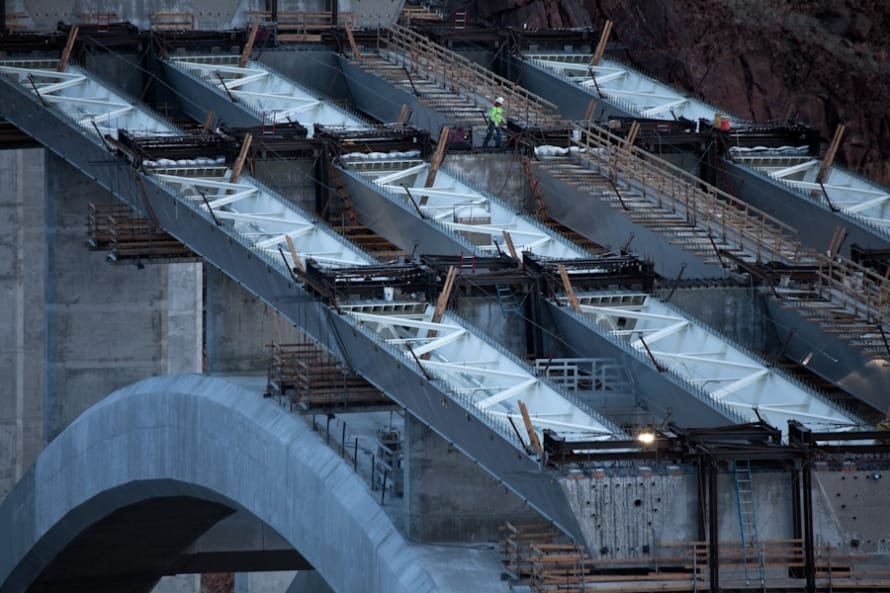
Interview by Nicole Pasulka
How did you start photographing the bridge at Hoover Dam?
The first quarter of 2009, my work got slow because of the recession, and I was trying to figure out what I wanted to do. I looked at that as an opportunity and decided to go on a road trip looking for images. I asked my assistant and fellow photographer Mike Sakas to go with me toward the Mojave Desert. Our end was the existing and future solar energy projects. But we left it very open. Continue reading ↓
All images used with permission, © copyright the artist, all rights reserved.

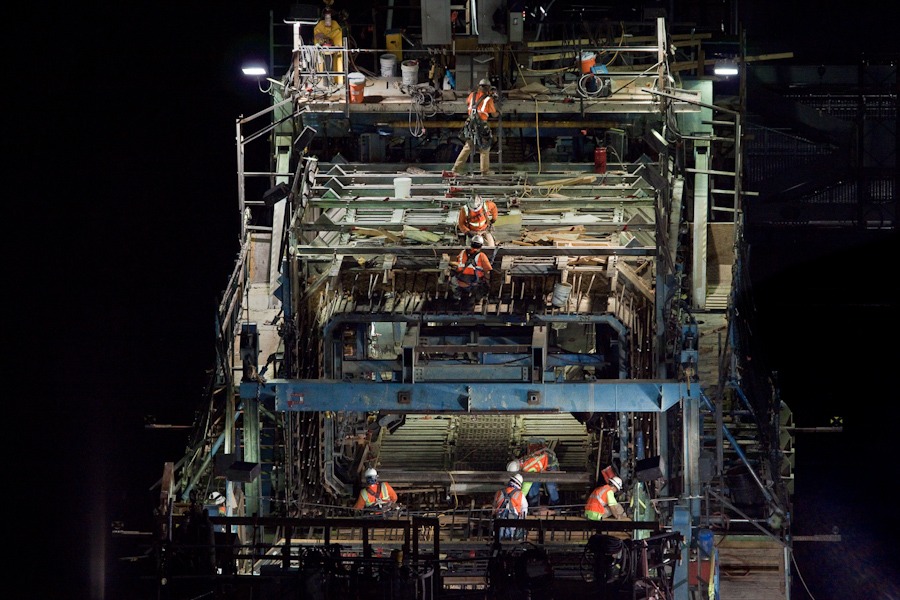
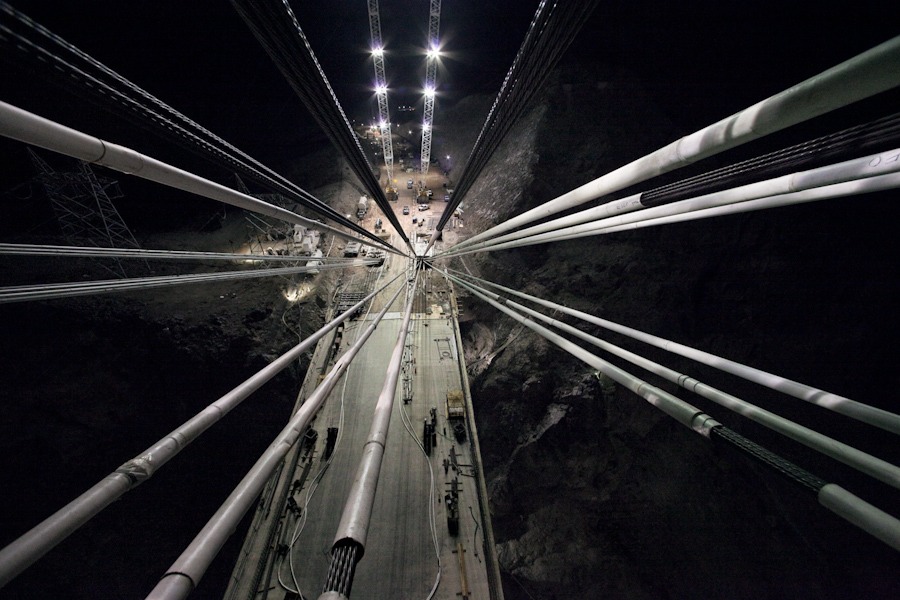
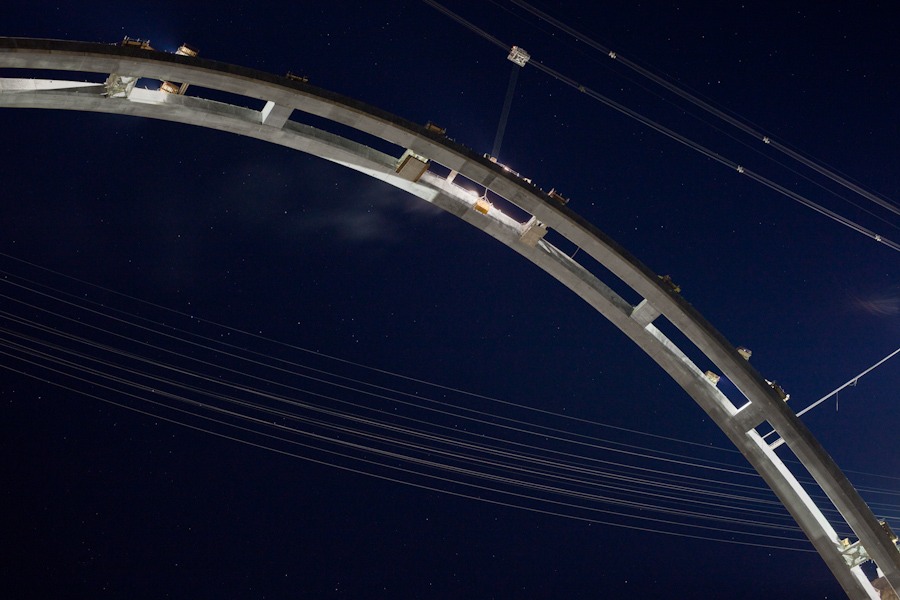
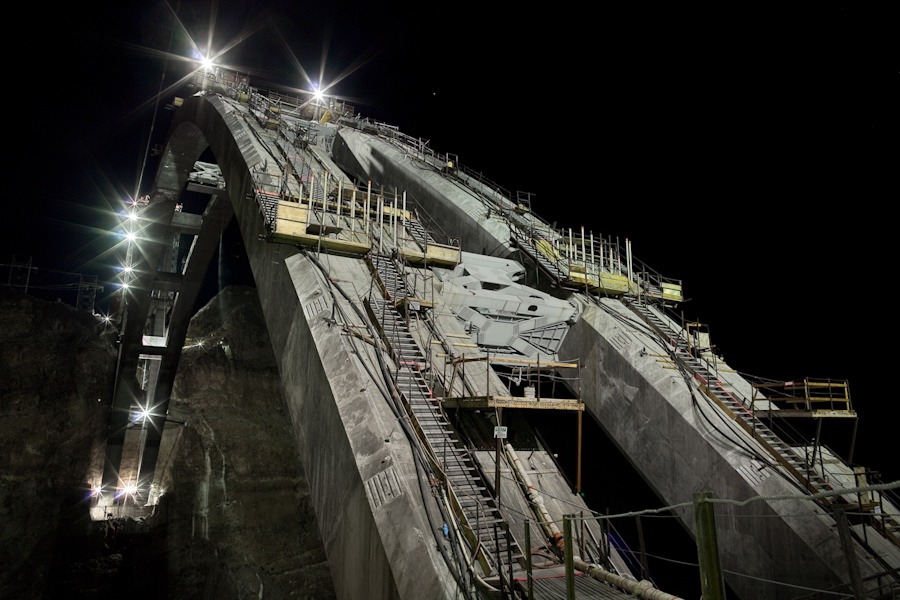
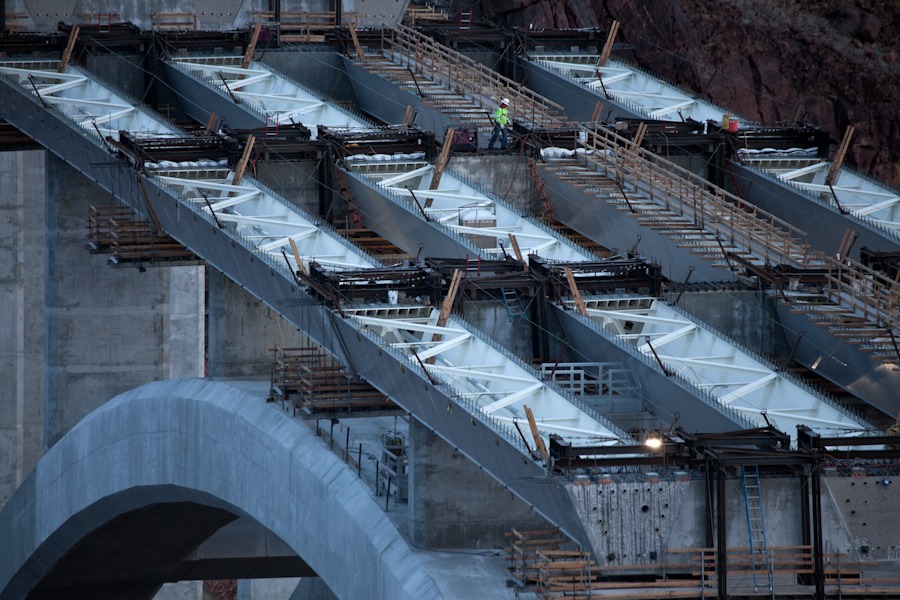
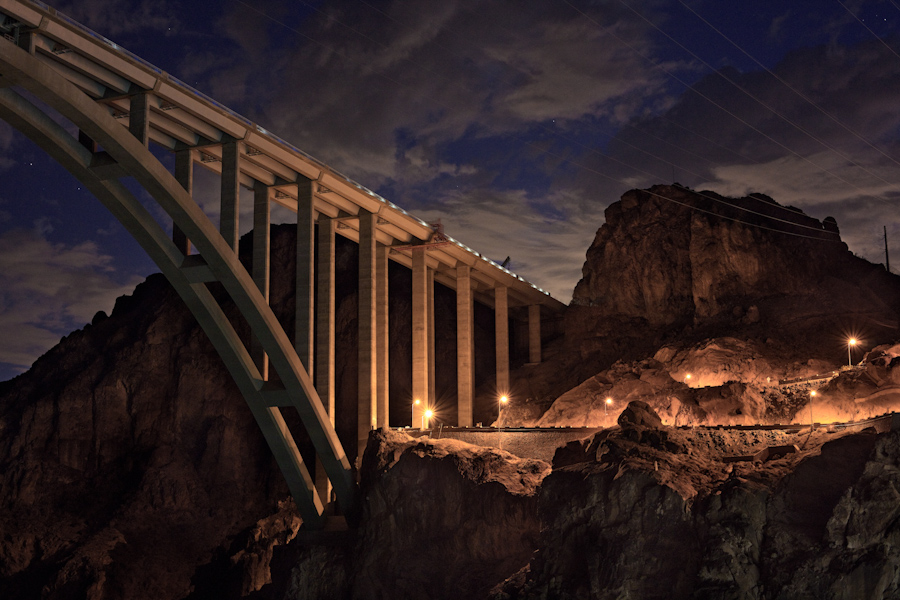
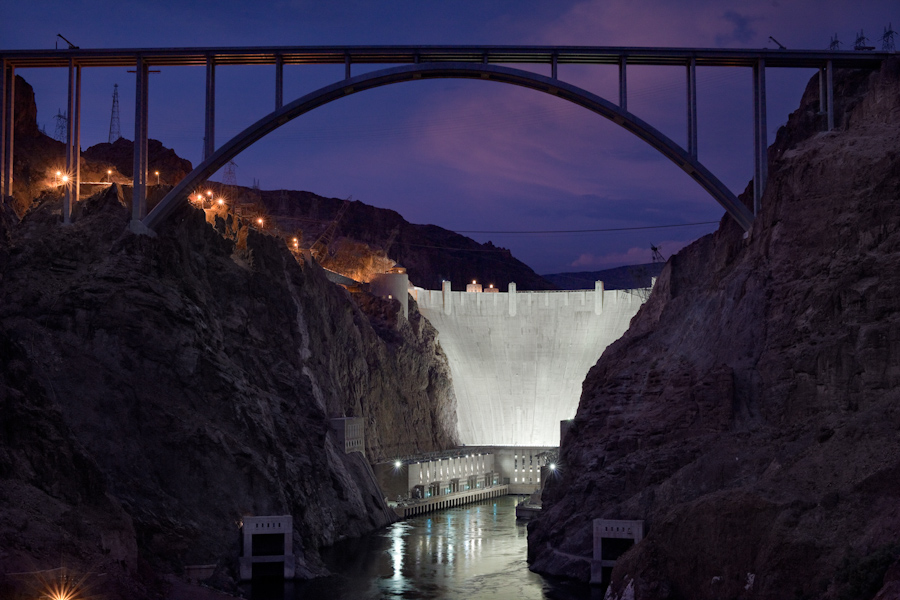
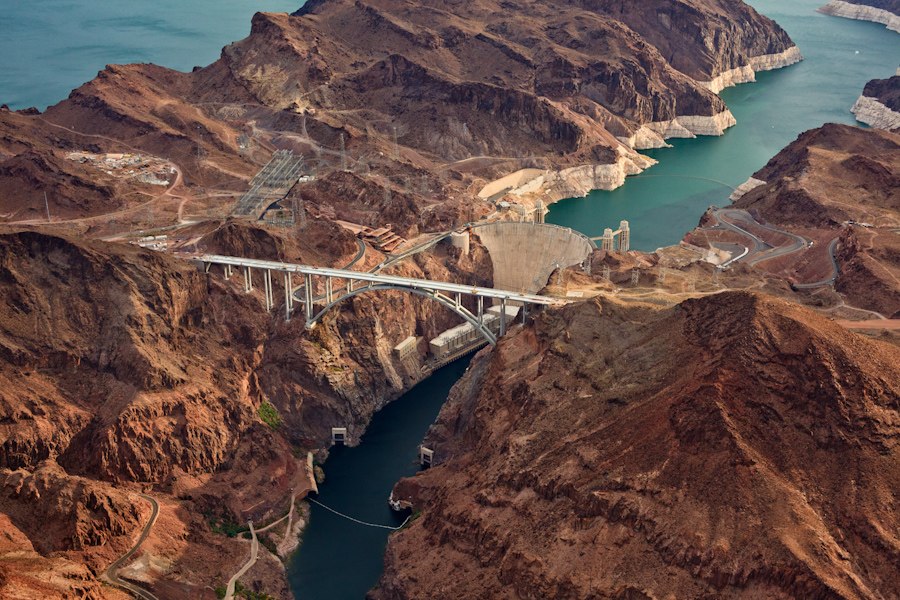
Interview continued
What happened that made you stop at the Hoover Dam?
We headed west from Santa Fe. A few days out on the road we decided to go across Hoover Dam and I saw the bridge. I was very taken by it, the way it looked as it was starting its journey across the canyon from both sides.
I spent 24 hours there—stayed for the cycle of sunset and sunrise—and looked at the dam during the day. We found out quickly there were only certain places we could photograph from publicly that would give angles that were interesting.
As I left there I said to myself, “there’s gotta be a way to do a project about this bridge.” It was fascinating visually to see this bridge arching out across the canyon.
What’s interesting is that you became massively interested in a bridge without knowing much about its construction.
The visual attraction was at the very front. If the bridge had been at a different place, if there had not been this movement across the canyon, I would have been like, “oh that’s cool,” and moved on.
After deciding you wanted to do the project, how did you proceed, then, to make these photographs?
We pitched the New York Times Magazine and it turned out they were doing their architectural issue on infrastructure. In April and May of 2009, I went out with the support of the magazine to initiate two nights and three days of work to look at the bridge. That helped me set up the relationships that I needed and understand the permitting processes.
It sounds like you got an education in dealing with bureaucracies that we take for granted, or are totally clueless about most of the time.
There were basically three geographic areas from which I photographed and each had its own requirements. The easiest was the aerial work. I’d hire a helicopter, we’d need to know there were a lot of helicopter tours over the dam, what elevation they fly at, and as a courtesy from a safety standpoint, we’d let the state police know we were going up.
The primary work was done from the greater piece of land that is controlled by the Bureau of Reclamation. Everything from these greater vantage points needed to be cleared and organized and fully permitted. Photographing on the land that was not public access or not public access at the time required explaining where I wanted to photograph from, why I wanted to photograph there, putting together an itinerary, in many cases scouting those locations, and having always an escort with me from bureau of reclamation.
The third area was what we called the work along the construction alignment along the Hoover Dam bypass. That required very specifically outlined procedures through the federal highway administration. In my case, that entailed direct contact with the project manager. Therefore, it required very carefully thinking about what I wanted to do, knowing there would be “yes’s” and “no’s” along the way.
Logistically what other challenges were you facing?
I looked at the canyon as a three-dimensional chessboard. I was always looking for new vantage points, or determining vantage points and holding them in reserve until the bridge was at a particular point of construction. Each time, before I’d go out, I would look at satellite photographs, which are way out of date, you’re just seeing the canyon. I’d also look at the path of the sun, where it was setting and rising and relate that to the time of day. I would relate that to the phase of construction that I wanted to cover.
I was very aware that if I was going to spend three days photographing the bridge that when I came back it was not going to be in the same phase of construction. So if I got a shot I would have it, if I did not, I would never get it again. The bridge would not look that way again. That had a certain charge to it in terms of paying attention to how I was moving the essay forward.
How has the project evolved since being published in the New York Times Magazine?
Publication gave a lot of people access to the work and gave me credibility to go back to the bridge. I wanted to make it a long-term personal project. I wanted the opportunity to have complete creative freedom.
There’s a very long history of photography in the American West that tries to explain the West in visual terms to those who are uninitiated. Historically, I can’t think of a man-made work that is bigger in its influence on the American West than the Hoover Dam. Finally, what I realized is that thousands or tens of thousands of people will be photographing the bridge every week. Unless it was documented in a certain way, it would only be remembered after the fact.
